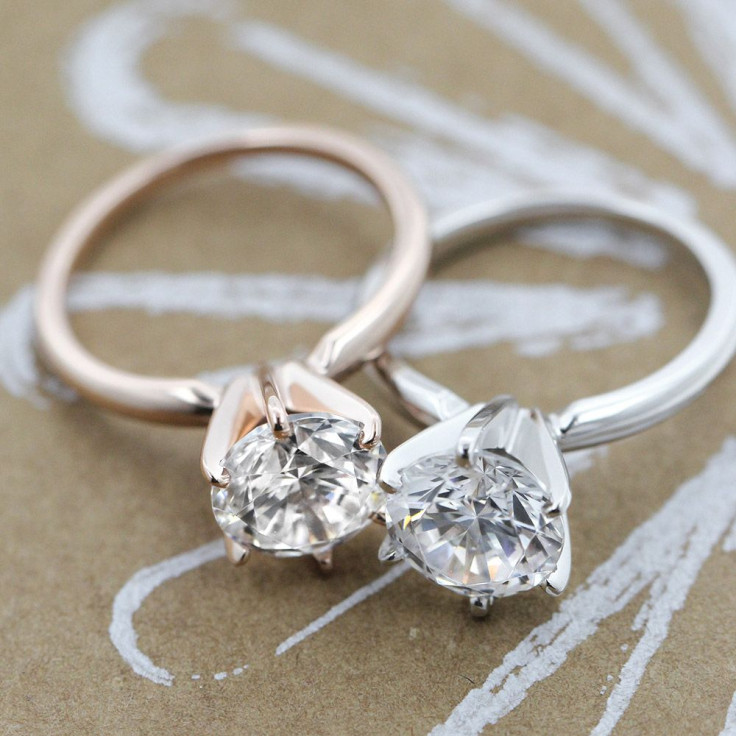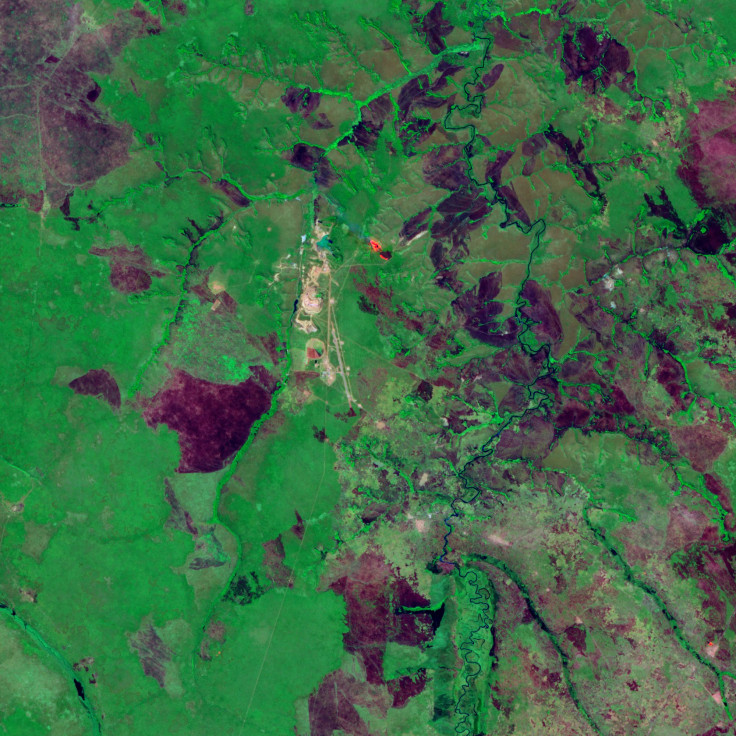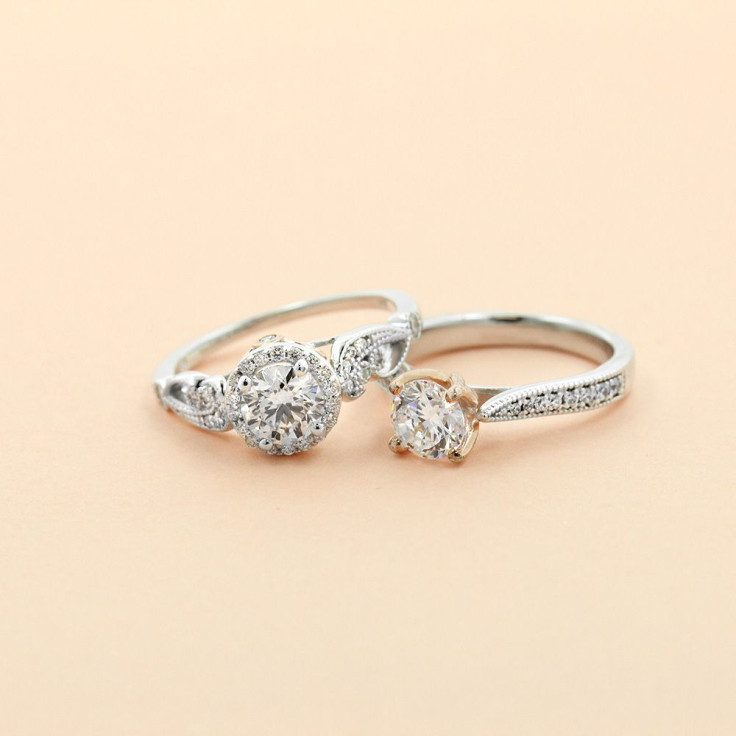Lab-Grown Diamonds Vs. Earth-Mined: Cost, Quality And Environmental Differences

Conflict diamonds get their name from the areas where they’re mined: places plagued by poverty, unsafe working conditions and sometimes even outright war. Mining the gems also has a significant environmental impact. Now, lab-grown diamonds may have finally become a real alternative for consumers who want sparkle without having to feel sinful.
Part of what makes Earth-mined diamonds so valuable is the fact they aren’t a renewable resource. “Natural diamonds formed more than a billion years ago, under immense heat and pressure about 100 miles beneath the Earth’s surface. They were thrust to the surface through volcanic eruptions millions of years ago,” Tom Moses, Gemological Institute of America executive vice president and chief laboratory officer, told International Business Times.
Read: Life After Death? Eco-Friendly Funeral Companies Will Help You Become A Tree
While some of the first lab-grown diamonds weren’t quite able to pass as “real” diamonds because of their yellowish or brownish coloring, the quality has increased as demand has. “There are some differences between natural and lab diamonds. However, just using the naked eye and a loupe, you probably wouldn't be able to identify them,” Emily Chin, assistant professor in the geosciences research division at the University of California San Diego, told IBT.
Structurally and chemically, the two types of diamonds are the same. The differences come at the atomic level where the impurities can be identified — but those differences are so small anyone admiring a piece of jewelry would never be able to see them, she said.
After finding out that she owned what was likely a conflict diamond, Anna-Mieke Anderson decided to start a company that offered alternatives to unethically mined stones. “My whole goal was to create a conflict-free diamond,” she told IBT. In 2005, she started a jewelry company called MiaDonna that sells lab-grown “eco diamonds.”
The impact of diamond mining on the Earth can be seen from space, with satellite photos of mining sites from NASA showing the depletion of mining areas. And the process, which frequently requires water, has been thought to cause harm to people and animals that live downstream from extraction sites.

But the lab-grown alternatives aren’t necessarily greener.
“As for whether lab diamonds are more ‘eco-friendly’ compared to natural diamonds, I think this is still open to debate,” Chin said. This is partially due to the fact that creating diamonds in a lab or factory still consumes energy — in some cases a lot of energy.
The currently small size of the lab-grown diamond industry is a factor as well. “It is not clear whether an economy of scale has been reached in the synthetic diamond industry,” said Chin.
Even so, data from the Ekati diamond mine in Canada and the Gemesis diamond lab in Florida show that the emissions measured in pounds of CO2 per carat are about five times less for the diamonds produced in the lab. The synthetic diamonds produced 26 pounds of carbon emissions per carat, compared to 143 pounds for the mined gems. And the data looked only at the CO2 per carat, not the impact of diamond extraction on ecosystems near the mine or other environmental effects.
Read: What is Lesedi La Rona? World's Second Largest Uncut Diamond Is Too Big For Its Own Good
As natural diamonds become harder to find, miners are going to more remote locations, like the bottom of the ocean, to find them, which means disrupting more ecosystems and habitats. “We are running out of diamonds,” said Anderson. “So they’re [miners] actually hurting the environment more than they have.”
As she describes it, the process of growing diamonds in a lab is somewhat like making ice in your freezer. You could go mine ice in the Arctic or Antarctic and risk disrupting the ecosystems that depend on it, or you could fill the ice cube tray in your freezer with water. The labs are doing what the Earth does to carbon, they’re just doing it faster — “crystallizing carbon exactly as if it were going on in the Earth, but we’re doing it in a controlled environment,” Anderson said.
She can trace the origins of each gem back to a lab and tell a customer exactly where it came from and was cut.
To offset emissions from shipping her products to customers, Anderson partnered her company with the Nature Conservancy. For every shipment the company makes, it plants a tree to help reforestation efforts. The company recycles the water used in jewelry production and uses recycled metals, she said.
A 2016 report from Morgan Stanley estimates that by 2020, “lab-grown diamonds could take a 15 percent market share in gem-quality melee [less than half a carat in rough form] diamonds and a 7.5 percent share in sales of larger diamonds by 2020.” At the time the report was published, lab-grown diamonds accounted for just about one percent of the global market value of rough diamonds.

Since founding the company in 2005, Anderson said she’s seen an increase in customers looking for a sustainable alternative to Earth-mined diamonds. Millennials are getting engaged and lab grown diamonds are easier to afford, for one thing. Also, “a lot of people are very concerned about where their products come from these days, not just diamonds,” she said. “Consumers are concerned about their carbon footprint.”
© Copyright IBTimes 2024. All rights reserved.





















